Kuku for Kiwis, Part II and The Merry Ol' Land of Oz, Part I
- William Watt
- May 10, 2024
- 14 min read
Updated: May 10, 2024
The capital of New Zealand, Wellington - Day 33 was our least favorite of the kiwi ports.
Maybe it was because we had seen many of the most scenic sites during our 2018 visit, like the Botanic Gardens, the Wellington Red Cable Car, Mount Victoria and The Byrd Memorial (for Richard Byrd, who flew over the South Pole from New Zealand in 1929 - it should be stated in an airplane, not hot-air balloon, which I don't believe as yet been attempted),.

We'd also been to The New Zealand Parliament Buildings, including the house of the Executive Branch locally known as The Beehive (more for the unique hive-like architecture of the building than the droning that may or may not happen within it's walls).
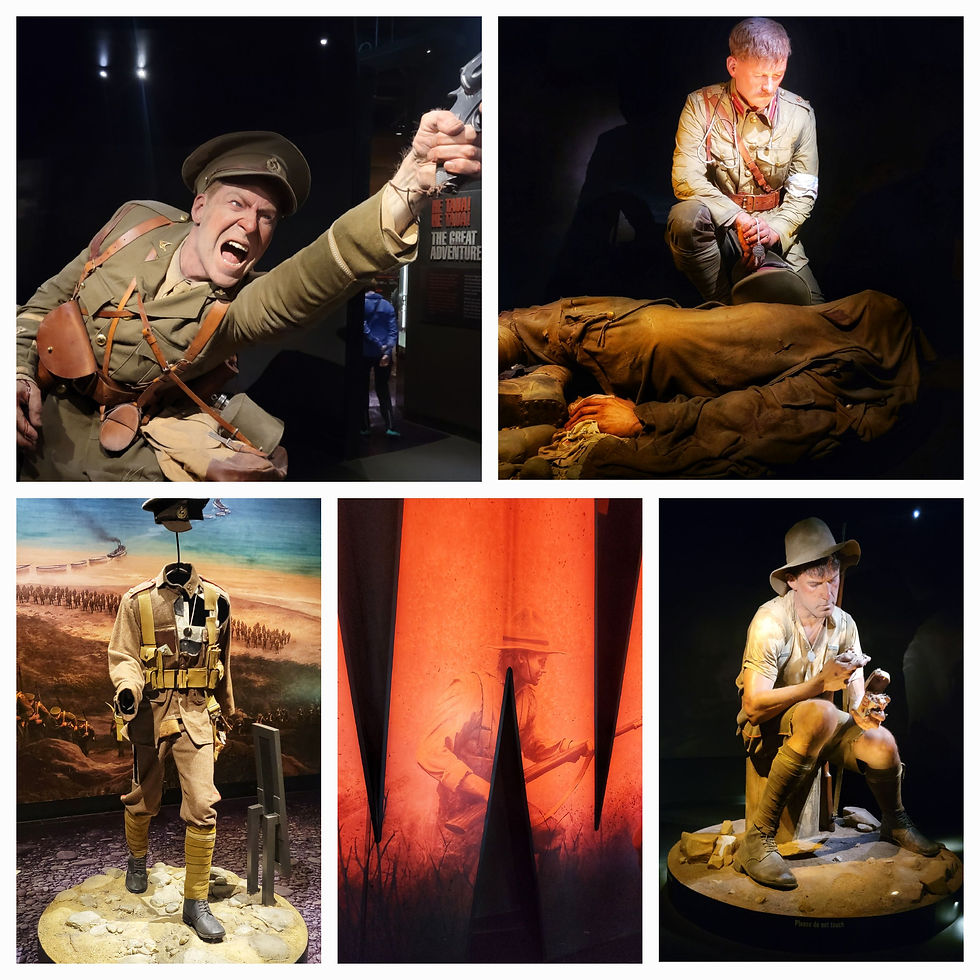
Maybe Wellington underwhelmed because the Museum of New Zealand Te Papa Tongarewa, though rich in cultural history, seemed less impressive compared to our visit to the Auckland Museum days earlier. It's probably unfair to compare, as the Te Papa is free to the public, and as we apparently arrived during a school holiday, it was packed with children; "herds of noisy petri dishes" is what I may have said to Gary.
Maybe it was because that, on an unseasonably warm day, there was nary a breeze in the city known as Windy Wellington. (Wellington is situated next to Cook Strait, the only sizeable gap between the mountains that run along the North and South Islands that the Strait bisects, creating a wind tunnel.)
We did enjoy exploring The Wellington Cathedral of Saint Paul, beautiful art deco church within walking distance of The Beehive. Designed in 1938, but not completed in 1992, the end-result was well worth the wait. The church doors were open when Gary and I arrived, and we took great joy in quietly sneaking further and further into the back hallways and chapel of the cathedral - until we discovered upon exiting that such exploration was encouraged.

A rare act of rebellion by Gary negated by Kiwi hospitality.
We also enjoyed our walk along the wharf, which included a viewing of sculpture "Solace in the Wind," also known by locals as "the naked man" - which is literal, not allegorical. It's hard to imagine this statue being erected in our nation's capital; yet another thing to love about New Zealanders.

(I chose the angle of the photo to keep the blog PG, but you may take my word that it is anatomically correct, and the man needed no solace on that account.)
We also took a moment to revisit the Wellington Central Railway Station, as impressive on the inside as it is on the out.

For more information on Wellington, NZ, visit https://www.wellingtonnz.com/
During our visit in 2018, we'd driven through Christchurch (Port of Lyttelton -DAY 34) on our way to the center of the South Island for a hovercraft experience, but we didn't get a sense of New Zealand's second-largest city.
So we were excited to take the free shuttle covering the thirteen kilometers between the port and the center of town.
Perhaps we should have guessed that Sunday might not be the most optimal day to visit a city named Christchurch. A lot of it seemed closed for the day; a lot of it seemed under construction. The latter was most likely due to the region being hit by back-to-back earthquakes, September, 2010 and February, 2011, killing 185 people and wounding thousands. Rebuilding was interrupted by another earthquake in 2016.
One of the few negatives about New Zealand is that about 14,000 - 20,000 earthquakes occur in the country yearly. (But only about 100 - 150 are large enough to be felt, so there's that.)
It's the strange dichotomy between Australia and New Zealand. Australia is not prone to earthquakes and has no volcanoes. New Zealand is very prone to earthquakes and the its North Island is part of the volcanic Kermadec Arc. On the other hand, Australia has five poisonous spiders, including the world's most venomous, and - get this - twenty-one of the twenty-five world's deadliest snakes hail from Australia. (Actually, an article on The University of Melbourne's website said that snake bite fatalities are rare, and that a snake should be judged on the havoc it can create within a population, not just the amount of venom it can inject. But it doesn't come out and say that Australia DOESN'T have 21 of the world's 25 most poisonous snakes.) The box jellyfish can kill. A dingo can eat your baby. New Zealand, on the other hand, has no poisonous snakes, and only one poisonous spider that's near-extinction. Birds have no natural predators in NZ, which is why so many breeds (like the Kiwi) nest on the ground. Okay, more people die in New Zealand from Earthquakes than die in Australia from snake bites, but.. snakes are icky. Anyway, what DID Christchurch have to offer on a Sunday?

Well, there's a lovely riverfront that includes the impressive Bridge of Remembrance Arch, opened on Armistice Day, 1924.

There's the Chalice Sculpture, commemorating the new millennium,
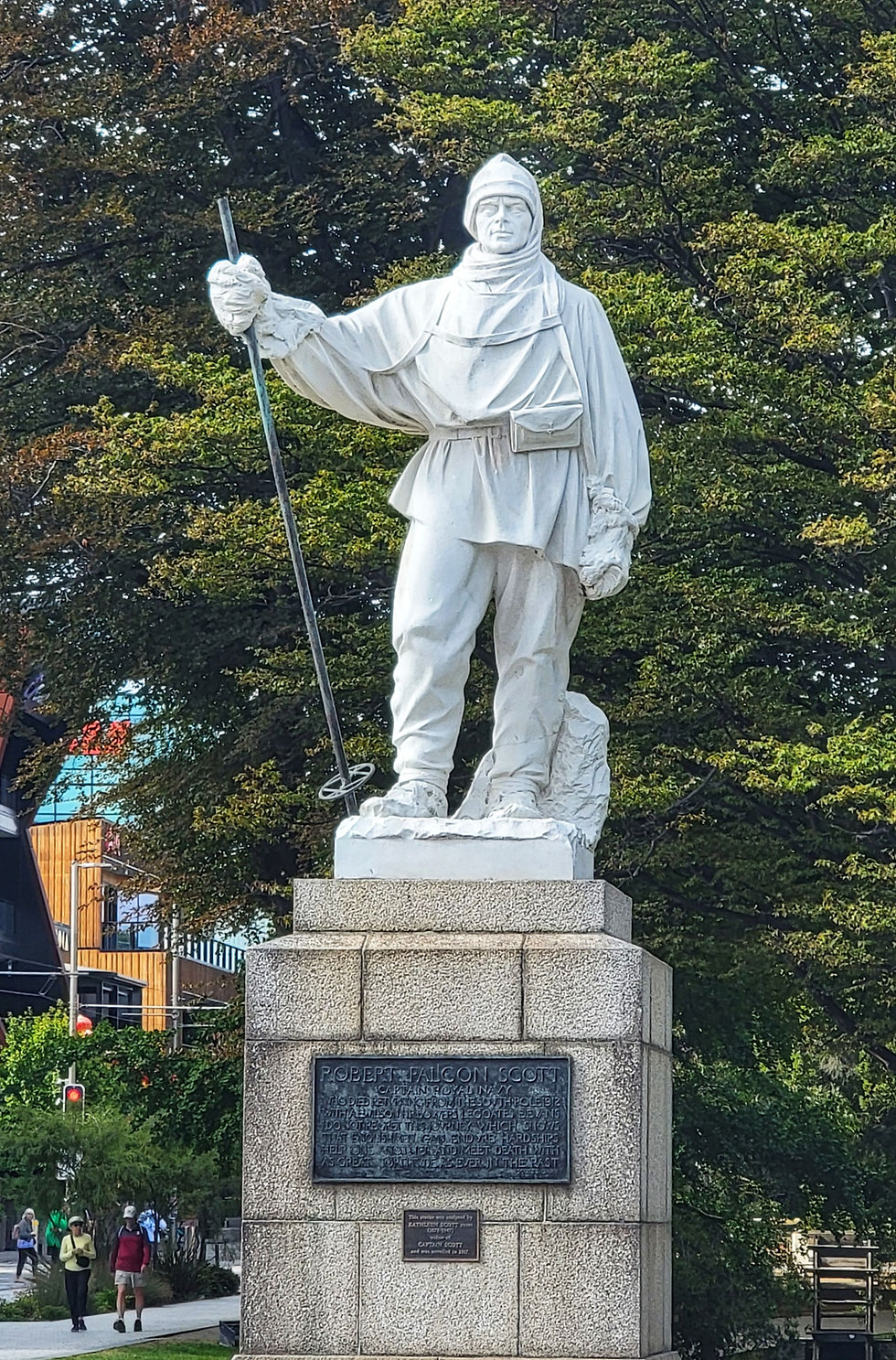
There's statues of Queen Victoria, Captain James Cook, and an impressive monument to Robert Falcon Scott, the explorer who led the expedition that famously reached the South Pole just after Roald Amundsen's team, sculpted by his widow, Kathleen Scott.

But perhaps our favorite monument was Erratic, by Brett Graham. According to the placard, the piece "ruminates on the very nature of memorials, and how only select elements of history are seen as worth remembering. Positioned across the river from the monument to Robert Falcon Scott, Erratic speaks to the journey of another Antarctic explorer, Raold Amundsen, whose skill and using indigenous expertise in reaching the South Pole were largely ignored by the British press in favour of Scott... The title of the artwork takes inspiration glacial erratics: rocks that have been carried vast distances by glaciers and deposited somewhere far from their point of origin."

Another highlight of our brief time in Christchurch was exploring a large art gallery housed in the original Canterbury University buildings, recently renovated from years of neglect and earthquakes.
Upon returning to the ship, we ventured into the port town of Lytteltown. We were joined by Cam, a delightful gentleman who we'd met onboard and whose husband, Dale (equally delightful), was recovering from a nasty cold that had made the rounds of the ship. Lyttelton was small, but the topography (it's built on a series of steep hills) made exploring a challenge. But it was worth it. The town has some beautiful homes, a quaint downtown, and some stunning vistas - once one burned dozens of calories to reach them.
For more information on Christchurch: https://www.christchurchnz.com/ or for Lyttelton: https://www.newzealand.com/us/lyttelton/
Our last stop in New Zealand was to the Scottish and Maori-influenced Dunedin (port of Port Chalmers - DAY 35).

Our time in this Victorian-Edwardian inspired college city in 2018 was brief, as we had spent most of the day on the Taiera Gorge Railway (https://www.nz-tourism.com/activities/taieri-gorge-railway/).

Still, our short time in the city convinced us that it was worth our while to explore the city in more detail - by foot. Luckily for us, the forecast called for overcast skies, which would make the unseasonably warm temps more bearable.
Unfortunately for us, the forecast yet again proved to be very inaccurate.

Having consulted the previous night with Professor Google regarding what the city had to offer, I mapped out a two-mile route that would begin in the Octagon Plaza in the city center, take us through the downtown and busy residential streets, until we reached the highlight of self-guided tour: the world's steepest street, according to The Guinness Book of World Records.

Baldwin Street briefly lost that distinction in 2019, when Guinness transferred the dubious honor to the Welsh town of Pffordd Pen Llesh (the pffamouss PPL). But Dunedin launched a formal protest, and after extensive research, was again awarded the title.
It wasn't a surprise that Dunedin, who identified so closely with the romantic poet Robert Burns, would be a city full of gothic and Victorian buildings, gardens upon gardens, and a multitude of mature, towering trees. Trees that offered ample shade against the unrelenting sun, none of

which resided on the route I'd chosen for us. We might have altered our route a bit to nearby tree-lined streets if it weren't for the fact that those streets were only accessible by connecting streets that may not have been Guinness recognized, but undoubtedly were amongst the steepest also-rans. We just couldn't see climbing steep street after steep street only to climb the steepest of the steep. So, instead we walked in the blazing sun, grateful that despite the weather report, we'd slathered on sunscreen.
Baldwin Street was, indeed, steep. It was also fairly nondescript. Unlike other famous roads like Lombard in San Francisco, Baldwin looked like any other street that might have popped up in a working-class neighborhood in the 1960s or 70s, except that it was bent up in the middle like a coat hanger.


Once the street starts its incline, the houses begin to look a bit wonky - not surprising as they're built on a surface at a near forty-five degree angle. Stopping to take photos along the way made the trek up more manageable; we even look fairly-fresh in a photo taken of us by a nice couple we met at the street's summit.
It was actually harder on the legs - particularly the shins and calves - descending Baldwin than ascending it. After a few missteps, I discovered that, if I sat back, as if I was about to sit on a sofa, it took the pressure off of my legs and placed it on my glutes, much better prepared to handle the stress.
Also making the trip down more enjoyable was the continuing conversation with the couple we met at the summit. They were visiting from Melbourne, Australia, and were taking a couple of weeks to explore New Zealand. They had immigrated after college from Hiroshima, Japan, a port in our near future. When we reached bottom, this couple that had just met us fifteen minutes earlier asked if they could drop us somewhere. As our sugar was dropping, and the closest restaurant we'd seen was near a mile away, we gladly accepted.
The friendliness of Aussies is almost equal to that of Kiwis.
For more information on Dunedin, visit https://www.dunedinnz.com/
The Insignia was scheduled to sail Milford Sound (https://www.newzealand.com/us/milford-sound/) on DAY 36, but a storm engulfing the Southern tip of the South Island made doing so dangerous, if not impossible. Unexpected news for us passengers, as this was the last we sight we saw as we left Port Chalmers:
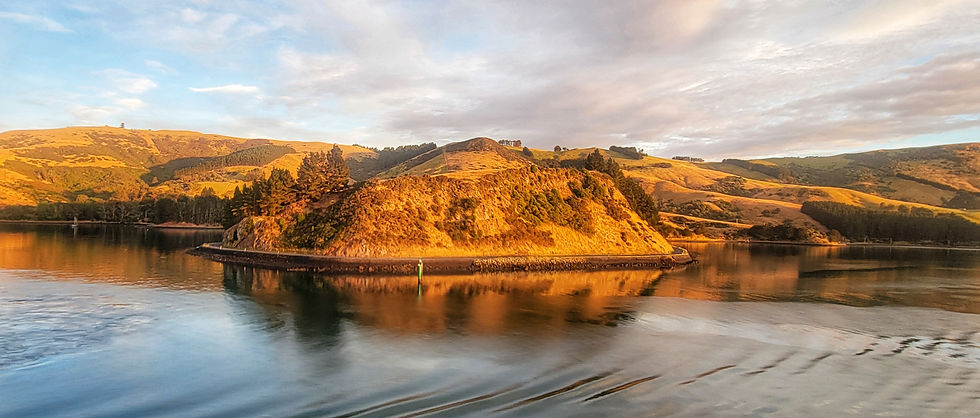
Our ship sailed North instead, toward Cook Strait that would take us in between the North and South Islands, toward a crossing of the Tasman Sea to Sydney, Australia (DAYS 39 &40).
Sailing into Sydney Harbour (Harbor for us Americans), especially when the weather cooperates as it did for us, is an experience that lives up to the hype. For me, it ranks up there with seeing the Taj Mahal, strolling the streets of Paris at night, and peanut butter.

One is greeted by the Sydney Opera House, of course. But just as impressive is the Harbour Bridge, referred to by locals the coat hanger because it's high arch design makes it look like a... hanger of coats.
Our ship lost the cruise lottery, so we did not dock in Circular Quay, a wharf within walking distance of the Opera House. But docking there would not have given us the opportunity to watch as our ship passed under the Harbour Bridge, just inland from the Quay, which was quite an impressive sight. Unfortunately, I don't think my photo does it justice.
Instead, we anchored at White Bay Terminal, fairly unwalkable to just about anything. But the ship offered free shuttle service to King Street Wharf which, although it was still about a half-hour walk to many of the things we wished to see, offered a slightly more subdued atmosphere while still offering many of the food, beverage and shopping amenities a tourist would wish for.
The first thing we chose to do upon our return to Sydney was a repeat visit to the Taronga Zoo. Taronga is an aboriginal word that means "beautiful view," which is appropriate for a zoo built on the side of a hill across the harbor from Sydney.
And, in order to get to the zoo, we had to cross the harbor. Or "get to" is more like it. It's on a twelve-minute scenic ferry ride Circular Quay to Taronga, and costs approximately $1.60.
Once you arrive to Taronga, one has a choice to either start the entrance at the bottom of the zoo and work your way to the top, or take a bus to the top of the park and work your way back down. Because the thirty-two minute walk from King Street Wharf to Circular Quay just wasn't enough to work off our Oceania Insignia dinner the night before. (Honestly, I don't think that walking to Perth, some 2,000 miles from Sydney, and back again would work off all the calories we've ingested since leaving Los Angeles in January. The Food of Oceania will be fodder for a future blog.)
Maybe we were too ambitious? Maybe it was too hot? Most likely, it was a bit of both, but mostly too hot? Whatever the reason, we didn't make it to every part of the zoo this time. But we did see most of it. The giraffes. The elephants. The platypus. The kangaroos and wallabies. The Ostriches. We skipped the reptile and insect house, which might as well be called "most of the things that can kill you," as we'd seen enough during our previous visit. Oh, and the koalas, of course. So many people visiting Australia act as it they've been cheated by the koalas. "They were sleeping the whole time!" Well, yes. Most likely, koalas will be asleep, just about to fall asleep, or just waking up when at any given time of the day. Koala bears - which aren't really bears, of course - sleep up to twenty hours a day. The reason is two-fold; their diet consists mainly of eucalyptus leaves, which are toxic and require a great deal of energy to break down, and, contrary to what some fitness gurus of from the 80s would have you believe, leaves are not a high-energy diet. A koala will most likely be awake and active at night, when it would be difficult to see them perched up in eucalyptus trees. So it's best to call upon them at dawn or dusk. Although, a koala is just as cute while sleeping as awake, as the pictures hopefully
demonstrates:
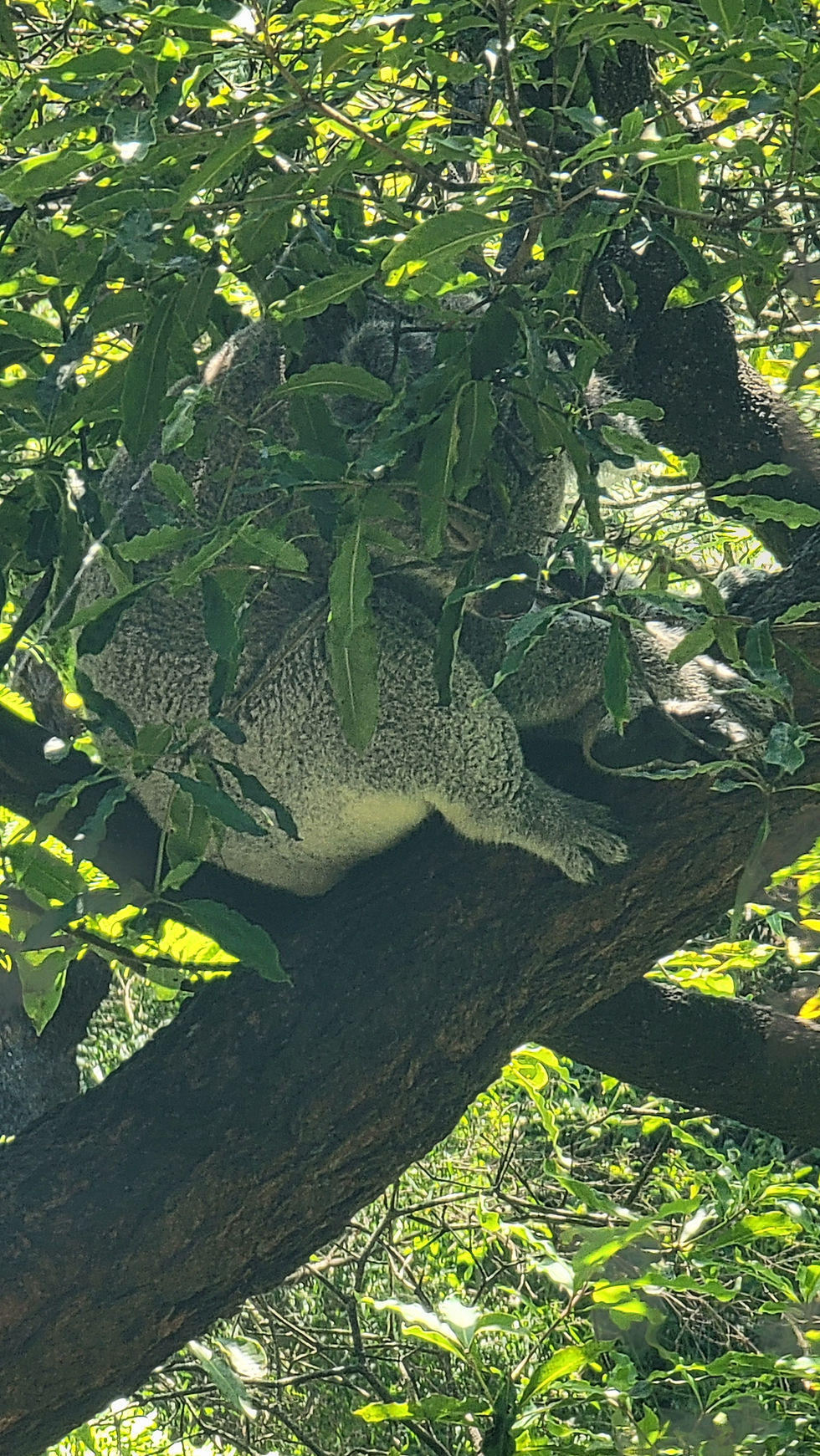


It wasn't just the heat and exhaustion that brought our zoo visit to a slightly-premature conclusion. We had tickets for the Sydney Opera House that night. For an Opera - which surprisingly, for an iconic place that has Opera as its middle name, isn't a given. A majority of the performances there are non-Operas: concerts, plays, performance pieces. Our tickets were for Puccini's Opera La Traviata.
Neither Gary nor I have extensive experience when it comes to opera. We’ve seen The Rabbit of Seville and What’s Opera, Doc?, the two brilliant Warner Brothers shorts that exposed many kids of a certain era to classical music. (Was there ever a more beautiful Brunhilda than Bugs Bunny?) As were both gay men of a certain age, we’re familiar with Maria Callas’ version of O Mio Babbino Caro. And, because we’re television watchers of a less-certain age, we’re familiar with the "Flower Duet" from Lakme used in British Airways commercials. Aside from that, Gary and I – combined – had only seen two operas: Madame Butterfly and Billy Budd. (The latter only because a friend was in the chorus, not because we both craved to see Melville set to an unhummable score.)
So we were very excited to when our friend Justin said he was able to procure tickets for while we were in Sydney. We were more excited that he was able to land a reservation for Bennelong, a restaurant that a New York Times review said, "... may be the holy grail of Australian restaurants." Perhaps our excitement was dampened a bit when we found out the cost of the prefix menu; not upset by it, necessarily, but we did experience sticker shock.
The food was delicious. For me, though, it was like most gourmet food of that caliber - I can't recall what made it special. I remember it was pretty when it arrived, and I remember that it tasted quite good, but I couldn’t describe the details of one dish that I had, save dessert. And I took pictures of each one. I don’t know why that should be. Shouldn’t a meal that qualifies as an event make a deeper impression upon my memory? I remember what I had the last time Gary and I went to IHOP (The International House of Pancakes for you plebeians), and that was over a year ago. (I had a Denver omelet - ironic because we were still living in Chicago at the time - with a side order of pancakes with blueberry syrup on top. Oh, and a Diet Coke, no refills.)
I remember the dishes at Bennelong were pretty, and the food was delicately seasoned and delicious, but… Maybe you can tell from the photos what we had?

I do remember the dessert, and not just because I almost always remember dessert. We all ordered the Pavlova, which arrived at our table looking like a miniature Sydney Opera House: It tasted as good as it looked.
Inside, the opera house inside was a bit of a surprise. Many from the ship who also attended the opera were disappointed that the symphony hall wasn’t more ornate. But it was clear that the architect’s primary goal was to create a space for optimal acoustics. The seats almost looked like…… the walls, instead of having the columns and chintz one would expect at La Scala (I assume), were relatively bare. And the result was impressive. The orchestra sounded phenomenal throughout, as did the female lead and the male baritone who played her not-to-be father-in-law. The male lead seemed miscast. He was a bit wooden and awkward – not the sort that would successfully woo a top-drawer courtesan – and his voice was about par with his acting. The chorus was truly spectacular, as well, and there were some scenic elements that took my breath away.
I mean, who needs columns and chintz on the walls behind you when there’s magic in front?

The second day was spent exploring the area between King’s Wharf and downtown, primarily the area known as The Rocks, considered the birthplace of modern Sydney. It was there that the first European settlers - convicts and their guards - first stepped ashore and set up camp. We also decided to climb the Coat Hanger. Not the bridge itself, although that was a possibility (one that we never entertained.) We climbed one of the four Pylons that appear to be supporting the Harbour Bridge, but actually have no function save for decoration. One of the Pylon's does give one access to a lookout point, which we accessed after climbing approximately 200 stairs. It was from there that we got a closer view of those either brave or foolhardy enough to embark on the almost three hour trek.

We THINK we captured a group climbing that included a couple we'd met on the ship, but as everyone's dressed alike, even the couple can't be sure.
We spent the rest of our morning/afternoon drinking in the sights of Sydney.

And what stunning sights they were.
DAY 41 - Newcastle was the day that our incredible luck with the weather ended briefly. The forecast called for the possibility of rain, and rain it did.
This wasn't a problem in an of itself. The temperature was still in the 70s, and so all that was required, we thought, were the lightweight plastic ponchos that we'd worn in Fiji. At least with the moderate temperature, we wouldn't be roasting in side of them.
But the temperature was never the issue - it was the wind.
It was a blustery day.
Our ponchos, which were basically plastic sheets with a hood in the middle, were never meant to cling to our bodies. So when the winds picked up, which was invariably, so did our ponchos. I think our ponchos photobombed every single person who was in our tour group. I know I had a hard time keeping the opening of my hood face-front, so I often missed what building our guide pointed to as he explained it's significance. At one point, as he spoke of the convicts that came up from Sydney during Australia's early days, I thought he was pointing to a bank as he said, "it was really the only place for the prisoners to start over again." Those Aussie's sure are risk-takers, I thought.
Newcastle is the largest coal exporting harbor in the world - ironic, as it is struggling to become a greener, more sustainable city. The term "coals to Newcastle" refers to doing something obviously superfluous, or attempting to sell someone something they already have an abundance of.
Perhaps the most interesting story of our tour revolves around our guide. Ben Walters. Google him. It appears that Mr. Walters will marry or attempt to marry anyone as long as it might make him famous.

If I were him, I would not send in either of the pictures we took of him...



For more information about Newcastle than we were able to glean from Mr. Serial Bachelor on a very blustery day:
As I post this hastily cobbled-together entry, Gary and I are headed to Dubai, where we hope that I can either get my smartphone screen replaced or replace the phone itself while saving the photos that I'd not yet transferred to the computer - basically every photo I've taken since Taipei, Taiwan. All because I wanted to get a photo of a monkey that had just stolen a lollipop from a teenager. Sweaty hands + tremors + gravity = smashed screen. I don't know what's more upsetting - the fact that I have to buy a new phone (and was not able to take a single photo of Elephanta Caves, where the accident happened), or that I missed what would have been a kick-ass photo of that monkey. As always, please forgive all typos/grammatical errors.







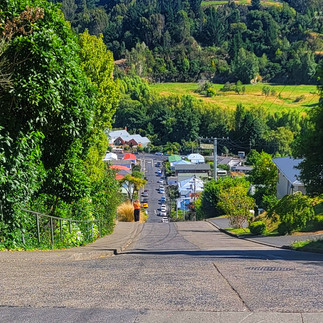





















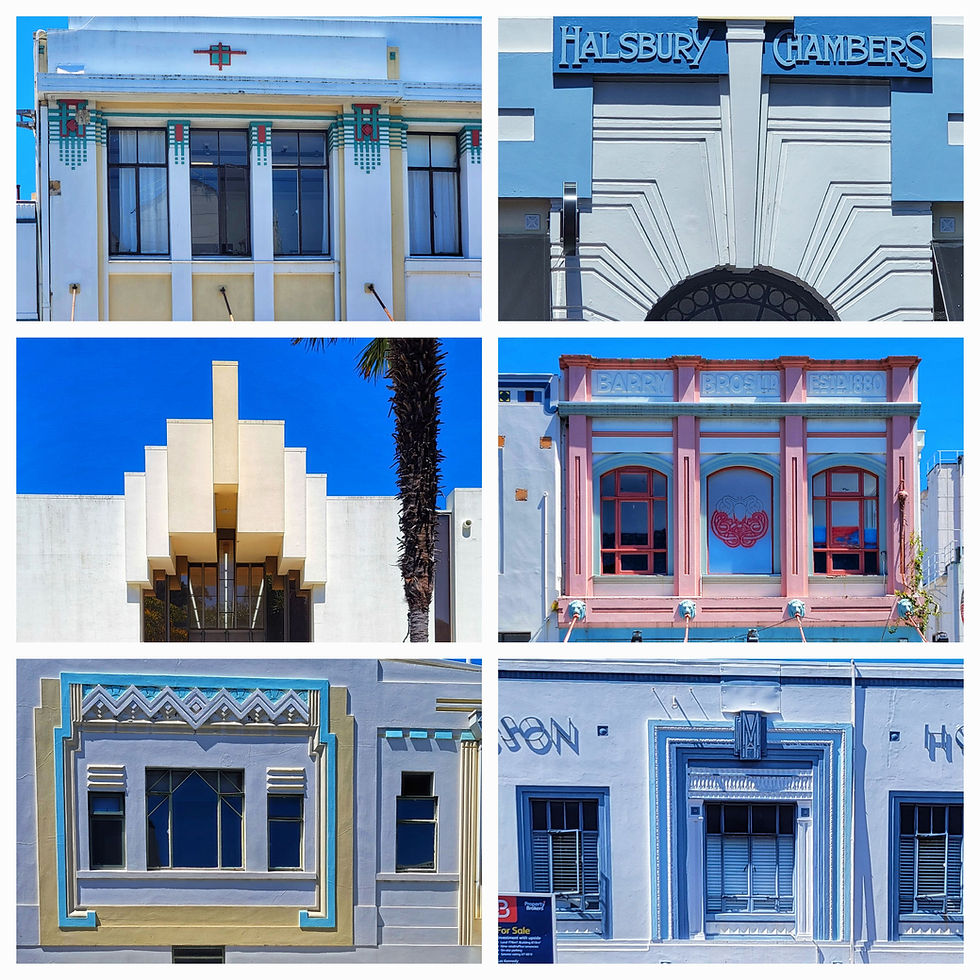

Wow, so much gorgeousness!!! Also, what an experience to attend at opera at the Opera House. Finally, how adorable are the sleeping koalas!!! Little chonkers. xo
Here’s a pic from 2018 that I took in Milford Sound - one of my favorite places on earth I’m sorry the weather didn’t allow you to see it. BUT I’m thrilled that you got to experience La Traviata - my favorite opera - in such an amazing place!!
Fun